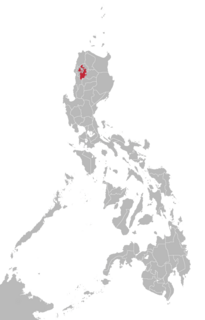Related Research Articles
Most languages of Europe belong to the Indo-European language family. Out of a total European population of 744 million as of 2018, some 94% are native speakers of an Indo-European language; within Indo-European, the three largest phyla are Romance, Germanic, and Slavic with more than 200 million speakers each, between them accounting for close to 90% of Europeans. Smaller phyla of Indo-European found in Europe include Hellenic, Baltic, Albanian, Celtic and Indo-Aryan.
Wetarese is an Austronesian language of Wetar, an island in the south Maluku, Indonesia, and of the nearby islands Liran and Atauro, the latter island located in East Timor north of Dili.
Ngiri is a Bantu language closely related to Lingala.
Central Tibetan, also known as Dbus, Ü or Ü-Tsang, is the most widely spoken Tibetic language and the basis of Standard Tibetan.
Jarawa is the most populous of the Bantu languages of eastern Nigeria. It is a dialect cluster consisting of many varieties.
The Gwèri or Vere language Were also known as Kobo or Mom Jango, is a member of the Duru branch of Savanna languages. It is spoken across the northern Nigerian–Cameroonian border.
Chamba Leko is one of two languages spoken by the Chamba people, the other being Chamba Daka. It is a member of the Leko branch of Savanna languages, and is spoken across the northern Nigerian–Cameroonian border.
Daka is one of two languages spoken by the Chamba people in Nigeria, the other being Chamba Leko.
Nyong (Daganyonga), also known as Mubako and Bali-Kumbat, is a Leko language spoken in two well-separated enclaves in Cameroon and Nigeria. Cameroonian speakers consider themselves to be ethnically Chamba.
The Ki language, Tuki, is a Southern Bantoid language of Cameroon.
Southern Luo is a dialect cluster of Uganda and neighboring countries. Although Southern Luo dialects are mutually intelligible, there are six ethnically and culturally distinct varieties which are considered to be separate languages socially.
Ede is a dialect continuum of Benin and Togo that is closely related to the Yoruba language. The best-known variety is Ife.
Bala (Lobala) is a Bantu language of the Democratic Republic of the Congo. According to Maho (2009), it includes Boko (Iboko).
Kayan is a dialect cluster spoken by the Kayan people of Borneo. It is a cluster of closely related dialects with limited mutual intelligibility, and is itself part of the Kayan-Murik group of Austronesian languages.
Kulisusu is an Austronesian language of Southeast Sulawesi, Indonesia. It is part of a dialect chain with two minor languages, Koroni and Taloki.
Kolbila is an Adamawa language of Cameroon and Nigeria.
Lamaholot, also known as Solor or Solorese, is a Central Malayo-Polynesian dialect cluster of Flores, Indonesia. The varieties may not be all mutually intelligible; Keraf (1978) reports that there are 18 languages under the name.

Itneg is a South-Central Cordilleran dialect continuum found in the island of Luzon, Philippines. This language and Ilocano are spoken by the Itneg people in Abra.
Kimaragang (Marigang), Tobilung, and Rungus are varieties of a single Austronesian language of Sabah, Malaysia. The three varieties share moderate mutual intelligibility. Children are not learning it well in some areas.
Masela (Marsela) is the language of Marsela Island in southern Maluku, Indonesia. Regional varieties are distinct; Ethnologue counts it as three languages.
References
- ↑ Holu, Yeci at Ethnologue (18th ed., 2015)
Samba at Ethnologue (18th ed., 2015)
Hungu at Ethnologue (18th ed., 2015) - 1 2 Jouni Filip Maho, 2009. New Updated Guthrie List Online